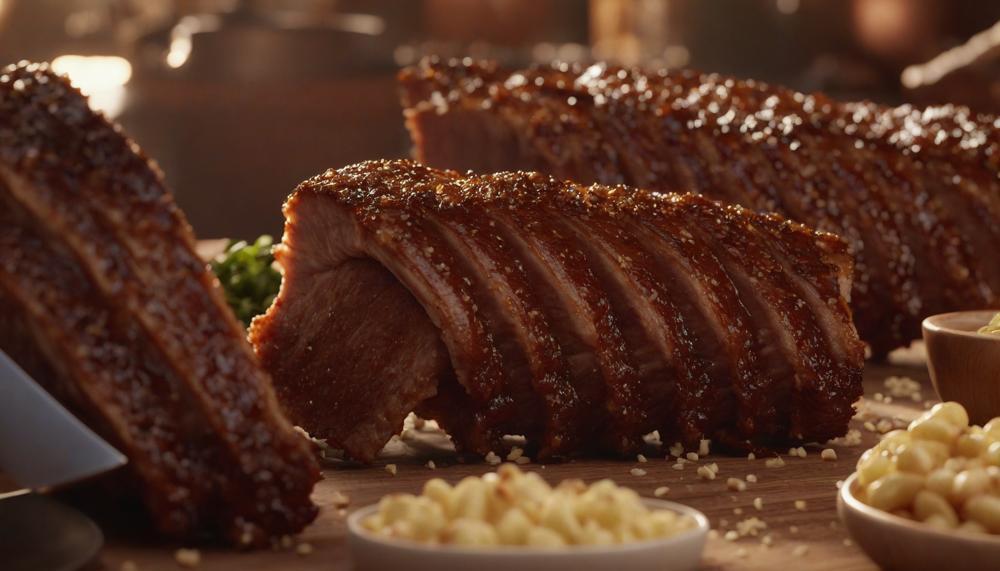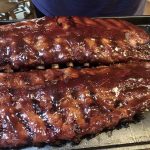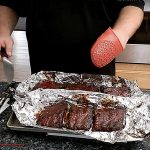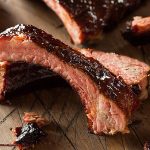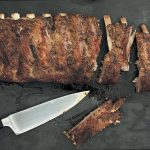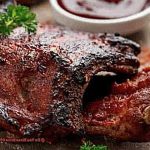If you’ve ever wondered what to do with spare rib trimmings, you’re in for a treat. Those seemingly insignificant bits left over after prepping your ribs can actually transform into delicious meals and elevate your cooking game. Here’s a sneak peek at what you can achieve with spare rib trimmings:
- Versatile Cooking Options: From hearty chili and savory stews to flavorful homemade sausages and juicy meatballs, spare rib trimmings can star in a wide range of dishes.
- Enhanced Flavor with Fat: Don’t discard the fat. It’s perfect for enriching dishes or seasoning your pots and pans, ensuring nothing goes to waste.
- Master the Art of Trimming: Learn to trim spare ribs like a pro to achieve that coveted St. Louis-style cut, ideal for even cooking and impressive presentation.
- Maximize Leftovers: While supermarkets may not always carry trimmed St. Louis-style ribs, DIY trimming ensures you get the most out of your meat, saving both money and culinary potential.
- Diverse Applications: Whether it’s shredding rib tips for pizzas and tacos or using pork skirt in sandwiches and soups, understanding the nuances of each cut opens up a world of culinary possibilities.
- Butcher Independence: Knowing how to handle spare rib trimmings empowers you to manage without constant butcher assistance, making you more self-sufficient in the kitchen.
With these insights, you’re ready to turn what might have been scraps into star ingredients of your next culinary masterpiece. Stay tuned to discover the full potential of spare rib trimmings and how they can revolutionize your cooking experience.
Contents
- 1 5 Best Ways to Use Spare Rib Trimmings in Your Meal
- 2 Should I Trim Spare Ribs Before Smoking Meat?
- 3 How to Smoke Spare Rib Trimmings?
- 4 How to Butcher Spare Ribs?
- 5 How to Cook Trimmings from Spare Ribs?
- 6 What to Do with Prime Rib Trimmings?
- 7 What are the Best Uses of Spare Pork Rib Trimmings?
- 8 Conclusion
5 Best Ways to Use Spare Rib Trimmings in Your Meal
Spare rib trimmings, with their rich marbling and intense flavor, provide an excellent opportunity for creativity in the kitchen. Here are five delectable ways to use them:
- Rib Tip Barbecue: Smother rib tips in a spicy, sweet barbecue sauce and slow-cook them until they are tantalizingly tender. This dish pairs wonderfully with coleslaw and cornbread, making it a perfect family meal.
- Pork Chili: Dice the rib trimmings and braise them with onions, garlic, and chili spices before adding beans and tomatoes. This hearty chili is ideal for warming up on chilly evenings.
- Homemade Pork Sausage: Grind the trimmings and combine with fresh herbs, spices, and a little pork fat for juiciness. These sausages are superb when grilled and served with peppers and onions.
- Smoky Pork Stew: Slow-cook the trimmings with potatoes, carrots, and smoked paprika. The result is a comforting stew with a smoky depth of flavor, perfect for a nourishing meal.
- Crispy Toppings: Render the fat from the trimmings to make crispy cracklings. Sprinkle these over salads, baked potatoes, or use them as a savory garnish for soups.
For further insights into the best techniques and recipes, refer to trusted culinary resources like Wikipedia on Barbecue.
Should I Trim Spare Ribs Before Smoking Meat?
Yes, you should trim spare ribs before smoking them. Trimming not only improves the appearance and ensures even cooking but also enhances the overall flavor of the ribs during the smoking process.
Trimming spare ribs is not just about aesthetics; it’s a fundamental step in preparing your meat for the smoker. The process involves removing excess fat, the membrane from the back of the ribs, and any loose meat or bone fragments. This preparation allows for more uniform cooking and better smoke penetration, which are essential for developing that desirable smoky flavor.
Here’s a breakdown of why trimming is beneficial:
- Even Cooking: Trimming helps the ribs cook more evenly, preventing thicker parts from being undercooked or thinner parts from drying out.
- Flavor Enhancement: Removing the membrane on the back allows the smoke and rubs to better penetrate the meat, enhancing the flavor deeply.
- Improved Presentation: Neatly trimmed ribs are not only easier to handle but also present better whether you’re serving them at home or competing in a barbecue competition.
For a practical guide on how to trim spare ribs, consider the following table, which highlights the key areas to focus on during trimming:
| Part to Trim | Reason | Benefit |
| Excess Fat | Prevents fat from causing flare-ups and uneven cooking. | More consistent texture and flavor in the finished ribs. |
| Membrane | Blocks smoke and rub penetration. | Enhanced flavor and smoke absorption. |
| Loose Meat/Bones | Can burn or cook unevenly. | Better structural integrity and presentation. |
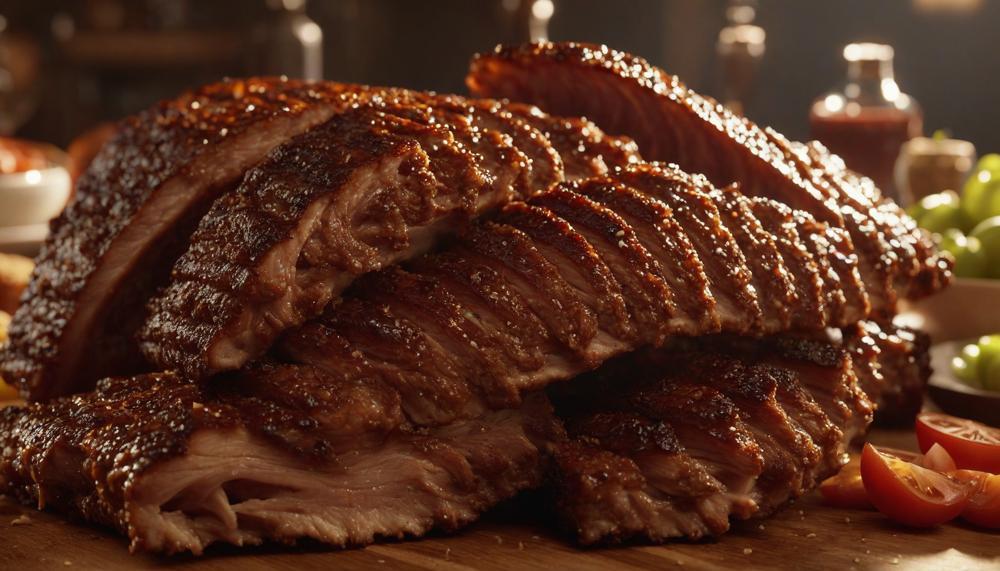
By following these trimming steps, you not only ensure that your spare ribs are prepped for optimal smoking but also set the stage for a delectable barbecue experience.
How to Smoke Spare Rib Trimmings?
Preparation of Spare Rib Trimmings
Trim spare ribs to achieve St. Louis-style cuts, focusing on removing excess fat and cartilage.
Seasoning for Flavor
Apply a dry rub generously to enhance taste. Use a mix of paprika, brown sugar, garlic powder, and salt for a balanced profile.
Setting Up the Smoker
Prepare your smoker to a steady temperature of 225°F (107°C) using hardwood like oak or hickory for a rich smoky flavour.
Smoking Process
Place trimmings on the smoker grate, ensuring they’re not overcrowded for even cooking.
Monitoring and Adjusting
Maintain consistent smoke by adding wood chips or chunks as needed throughout the smoking process.
Cooking Time
Smoke the rib trimmings for 3-4 hours until they reach an internal temperature of 190°F (88°C) for tender meat.
Resting Period
Rest the smoked trimmings wrapped in foil for 15-30 minutes before serving to enhance juiciness.
How to Butcher Spare Ribs?
Remove the Membrane
- Start by peeling off the tough membrane on the back of the ribs. This allows better seasoning penetration and enhances tenderness.
Separate the Rack into Sections
- Divide the rack into sections: baby back ribs and spare ribs.
Trim the Baby Back Ribs
- Trim excess fat and meat from the baby back ribs for even cooking and presentation.
Trim the Spare Ribs
- Remove excess fat and meat from the spare ribs. Cut off the rib tips for a cleaner look.
Create St. Louis Cut Ribs
- For St. Louis style ribs, remove cartilage from the ends of the spare ribs and trim them into a rectangular shape.
Cut into Individual Ribs
- Slice between each bone to separate them into individual rib pieces for easy serving.
Season and Cook
- Season your ribs with your favourite rub or marinade. Cook using your preferred method such as grilling, smoking, or baking.
How to Cook Trimmings from Spare Ribs?
Spare rib trimmings, often overlooked, are a treasure trove for the savvy griller. Rich in flavor, these cuts are perfect for a variety of dishes. Here’s how to transform them into culinary delights:
Barbecue Rib Tips
Slow-cook the rib tips on a low heat grill. Marinate them first in a mixture of barbecue sauce, garlic, and your choice of spices to infuse deep flavors.
Smoked Skirt Meat
Utilize the skirt meat by smoking it. Rub the meat with a blend of smoked paprika, brown sugar, salt, and pepper. Smoke until tender. This method imparts a rich, smoky flavor that’s hard to resist.
Rib Trimming Stew
Cut the trimmings into small chunks and slow-cook them with vegetables like carrots, potatoes, and onions in a rich broth. This stew is hearty and warming, perfect for cooler days.
Homemade Sausages
Grind the trimmings and mix with spices and herbs before stuffing into natural casings.
These homemade sausages can be grilled or fried and offer a delightful twist to your barbecue.
Crispy Fried Rib Bits
Dice the trimmings and fry until crispy. Serve as a snack with a spicy dipping sauce or use them to top salads or baked potatoes.
Flavored Cooking Fat
Render the fat from the trimmings to use for cooking.
This fat is excellent for frying or sautéing, adding a subtle pork flavor to dishes.
What to Do with Prime Rib Trimmings?
When it comes to making the most out of prime rib trimmings, the possibilities are enticingly diverse, especially for those with a penchant for the grill.
These trimmings, rich in flavour and potential, can be transformed into several delectable dishes that are sure to impress at any BBQ or family dinner.
BBQ Rib Tips:
Rib tips, often overlooked, are perfect for slow grilling. Marinate them in your favourite BBQ sauce, then grill at a low temperature (around 225-250 degrees Fahrenheit) for 60-80 minutes.
The slow cooking process tenderizes the meat, allowing the flavours of the marinade to permeate deeply.
Hearty Rib Chili:
Using the meaty parts of the trimmings, prepare a robust chili. Dice the trimmings and brown them in a pot.
Add beans, tomatoes, onions, and a mix of spices like cumin and chili powder. Let it simmer to develop a deep, complex flavour.
Smoked Meat for Toppings:
Smoke the rib tips until they are tender, then shred them. This smoked meat can be used as a topping for pizzas, nachos, or even added into tacos for a smoky twist.
Stews and Soups:
Slow-cook the trimmings in a stew or soup. Their robust flavour enhances any broth, and the meat becomes fork-tender after hours of simmering. Ideal for a comforting meal.
Homemade Sausage or Meatballs:
Grind the trimmings to use as the meat base for sausages or meatballs.
Mix with herbs, spices, and a binding agent like breadcrumbs or egg, then grill or fry for a homemade delight.
What are the Best Uses of Spare Pork Rib Trimmings?
The best uses of spare pork rib trimmings are versatile and delicious, perfect for enhancing your grilling experience. Here are some creative ways to make the most of these flavorful cuts:
- BBQ Rib Tips: Transform trimmings into tender BBQ rib tips, seasoned with a smoky rub or your favorite marinade for a finger-licking treat.
- Rib Chili: Add depth to your chili by incorporating chopped rib trimmings, simmered with beans and spices for a hearty, savory dish.
- Smoked Meat Toppings: Use finely chopped trimmings as a topping for pizzas or loaded fries, adding a rich, smoky flavor to every bite.
- Stews and Soups: Enhance stews and soups by slow-cooking rib trimmings, allowing their meaty goodness to infuse into the broth.
- Homemade Sausages or Meatballs: Grind trimmings with seasonings to create homemade sausages or meatballs, perfect for grilling or simmering in sauces.
These uses not only elevate your grilling prowess but also ensure no delicious bit of pork goes to waste. Experiment with different recipes to discover your favorite way to enjoy spare pork rib trimmings.
Conclusion
Transforming spare rib trimmings into culinary delights is a rewarding endeavor that elevates your cooking skills and maximizes the value of your ingredients. These versatile trimmings can be used in various dishes, adding rich flavors and textures to your meals.
Spare rib trimmings shine in hearty recipes like chili, stews, and homemade sausages. Their fat content enhances the depth of flavors, making dishes more sumptuous. Don’t discard the fat; use it to enrich other recipes or as a seasoning for your cookware, ensuring nothing goes to waste.
Learning to trim spare ribs like a pro not only achieves the perfect St. Louis-style cut but also ensures even cooking and a visually appealing presentation. This skill also allows you to maximize your meat, save money, and enjoy the full potential of your rib purchases.
Whether it’s shredding rib tips for pizzas and tacos or incorporating pork skirt into sandwiches and soups, understanding each cut’s nuances opens up a world of culinary possibilities. Becoming proficient in handling spare rib trimmings empowers you to create delicious meals without constant reliance on a butcher.
Embrace the potential of spare rib trimmings and let them be the star ingredients in your next culinary masterpiece.

